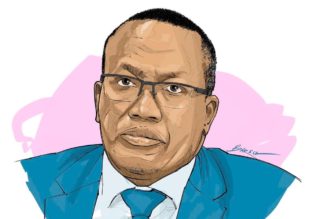Companies
Kenya Power in Sh10bn plan to revamp old transmission lines
Wednesday May 24 2023
Kenya Power technicians working on a transmission line. FILE PHOTO | NMG
Kenya Power will spend Sh10 billion in the year starting July to revamp its ageing transmission network in a bid to increase reliability and stem the outflow of customers shifting to alternative power sources.
The firm’s CEO Joseph Siror said Wednesday that the money will be used to build new power lines and substations, helping the utility meet the growing customer numbers and with increased reliability.
Kenya Power has been grappling with an ageing transmission line and vandalism that have led been blamed for outages and prompted big consumers and homes to opt for internal and reliable power supply like solar and biomass.
Funding hitches have over the years hurt Kenya Power’s ambitions of bolstering the transmission line, adding to the woes of repaying loans and power suppliers. The firm slumped into a half-year loss of Sh1.1 billion for the half year ended December.
“To adequately support e-mobility and other sectors of the economy, we will sustain investments to strengthen the grid and enhance network stability and flexibility for quality and reliable service,” Dr Siror said.
Kenya Power is in line for Sh40. 8 billion ($300 million) interest-free loan from the World Bank to help the utility pay debts, revamp its ageing transmission network and expand the national grid.
The billions will be released through the Treasury under a seven-year programme dubbed Green and Resilient Expansion of Energy (Green).
Old transmission lines have also made it increasingly difficult for Kenya Power to cut system losses. The utility puts its system losses at 19.4 percent currently and has an ambitious target of cutting this to 13.4 percent in the next three years.
Prolonged blackouts that at one point peaked at an average of 10 hours in November last year, with the utility attributing the outages to internal and external factors.
Kenya was on March 4, 2023, plunged into a national blackout, just six months after a similar outage on November 24 last year that hit hard Nairobi, Coast and Mount Kenya regions.
The unreliability of the national grid has in recent years prompted a shift to solar and biomass internal electricity generation, especially by big consumers and wealthy families.









